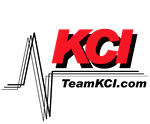0
Cisco® 2350-48TD-S : 8/2/2011
Status: Currently Supported by TeamKCI
TeamKCI has extensive hands-on experience with the Cisco® 2350-48TD-S and will continue to support your equipment for as long as you choose to use it. Parts and replacement units are in stock and can ship overnight.
TeamKCI will continue to support these units for as long as you choose to use them.Cisco® 2350-48TD-S Maintenance
Support – TeamKCI is the leading maintenance provider of your company legacy hardware, offering premier support with four attractive SLAs: 24 x 7 x 4hour onsite response; 11 x 5 x 4hour onsite response time 24 x 7 NBD response; 9 x 5 NBD response. Round-the-clock tech support is standard with each SLA. We guarantee you will speak to a qualified engineer within 15 minutes of placing a service call any time of day or night. We support call home and dial-in features. And, will even store spare parts on your premises at no additional cost. You won’t find better third-party your company support anywhere. Also Available: Used and refurbished Cisco® 2350-48TD-S equipment.
How to Get Started?
For more information on a Cisco® 2350-48TD-S or any other your company products simply click the TeamKCI Request a Quote Button or call TeamKCI at 201-934-6500 Ext. 11 for immediate assistance.
Hardware – TeamKCI sells pre-owned tested and guaranteed your company switches, directors, remote switches and routers at huge savings over the manufacturer’s list price. All pre-owned your company hardware is meticulously tested, and burned in for 24 hours. Checkout TeamKCI prices. TeamKCI is the financial alternative option that will maximize your IT dollar. Coupled with our 90-day replacement warranty.
Warranty – TeamKCI offers a 90-day warranty and 9-5 technical support on all refurbished Cisco® 2350-48TD-S and all other pre-owned refurbished your company SAN equipment we sell. Extended warranties and 24x7x4 onsite support are also available for an additional charge. Learn more.
Cisco® is registered trademark of Cisco Systems, Inc. and/or its affiliates in the United States and certain other countries.

